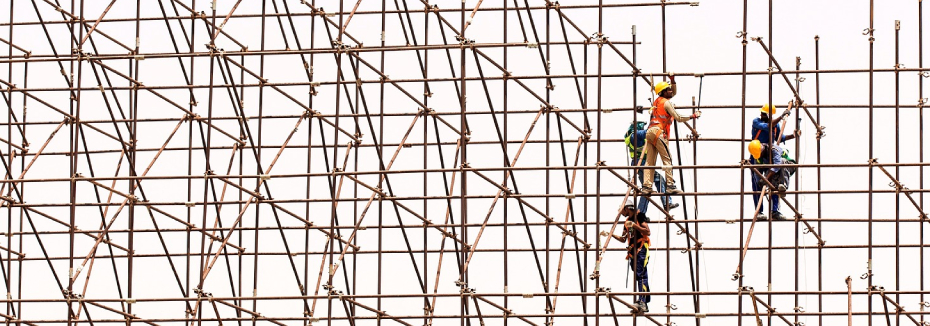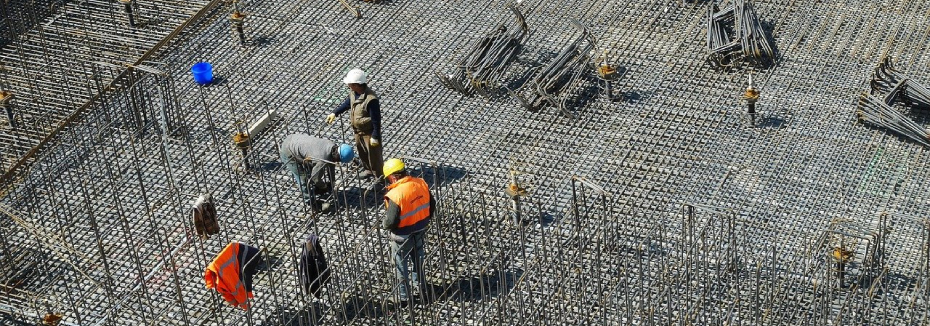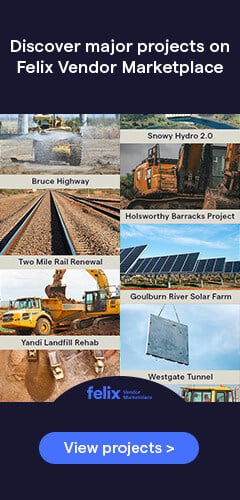Infrastructure Australia has released their June 2022 update of their Infrastructure Priority List, which highlights the need for better focus on delivering resilient rail and road connections in regional Australia.
The updates to the list will help enhance efficiency as well as connectivity of the nation’s transport networks while also promoting development in northern Australia.
“The Infrastructure Priority List presents the key investment opportunities for Australia’s cities and regions that should be further developed over the next 15 years,” Infrastructure Australia said in a statement.
The June 2022 update involves project proposals at various stages of development that have not been fully funded. This includes 25 new Early-stage proposals (Stage 1), three new Potential investment options (Stage 2) and two new Investment-ready proposals (Stage 3).
Following the development of a strong business case, the two new Investment-ready proposals have been recommended for Commonwealth funding and these projects have been independently assessed by Infrastructure Australia.
The two proposals are the Australia-Asia Power Link in the Northern Territory and the Circular Quay Renewal in New South Wales.
Sun Cable’s proposed Australia-Asia Power Link involves the development of a large-scale dispatchable renewable energy resource in the Northern Territory that can provide zero emission electricity to Darwin and Singapore.
The project will include the delivery of the world’s largest solar farm and battery storage along with the longest subsea electricity cable. This project aims to deliver lower electricity prices for the Territory as well as establish a new renewable energy export industry for northern Australia.
On the other hand, the New South Wales Government’s proposed Circular Quay Renewal project will transform one of the nation’s most recognisable and historic sites.
This project will deliver major transport upgrades, modern and well-integrated public spaces, and greater recognition for First Nation cultures and history. You can read more about the Circular Quay Renewal project here.
Below is the complete list of the Infrastructure Priority List June 2022 update.
Early Stage (Stage 1) Proposals
| Listing Name / Proponent | Sector | Problem / Description | Timescale |
| New South Wales zero emissions buses / NSW Government | Transport | Greenhouse gas emissions, air pollution, and noise pollution associated with diesel-powered public buses in NSW | Near-term |
| Greater Parramatta and Olympic Peninsula transport connectivity / NSW Government | Transport | Poor connectivity to and from precincts in Greater Parramatta and the Olympic Peninsula, limiting ease of movement | Medium-term |
| NSW heavy vehicle rest stops provision / NSW Government | Transport | Insufficient or inadequate infrastructure to allow drivers of heavy vehicles to stop and rest across NSW | Near-term |
| NSW Inland Rail interface improvements / NSW Government | Transport | Ensuring interoperability between the Country Regional Network and Inland Rail to maximise productivity and efficiency of freight movements from regional NSW to domestic and export markets | Medium-term |
| Sheahan Bridge (Hume Highway) upgrade / NSW Government | Transport | Strength limitations on the northbound Sheahan Bridge at Gundagai are constraining High Productivity Vehicle movements on the Hume Highway | Medium-term |
| Mulgoa Road upgrade / NSW Government | Transport | High levels of congestion and safety risks on Mulgoa Road in Western Sydney | Medium-term |
| Parramatta North health and innovation precinct (Stage 1) / NSW Government | Multiple | Opportunity to redevelop Government-owned land in Parramatta North, capitalising on the redevelopment of Westmead and the Parramatta Light Rail | Medium-term |
| Greater Parramatta and the Olympic Peninsula (GPOP) growth area enabling infrastructure / NSW Government | Multiple | Opportunity to co-ordinate delivery of infrastructure to support sustainable growth in Greater Parramatta and the Olympic Peninsula | Medium-term |
| M1 Pacific Motorway northbound capacity (Wahroonga to Mt Colah) / NSW Government | Transport | Extreme congestion on the M1 Pacific Motorway between the existing North Connex portal and Mt Colah | Near-term |
| Melbourne intermodal terminal capacity / VIC Government | Transport | Existing intermodal terminal capacity in Melbourne is unable to service Inland Rail trains (1,800m long, double-stacked) | Medium-term |
| Melbourne middle and outer suburban transport connectivity / VIC Government | Transport | Melbourne's monocentric urban form is constraining the economic potential of Melbourne's middle and outer suburbs | Near-term |
| Ipswich City Centre cross river connectivity and network resilience / Ipswich City Council | Transport | Strong forecast population growth and a single river crossing is expected to place increasing pressure on the transport network in Ipswich | Medium-term |
| Southern Gold Coast-northern Tweed transport connectivity / QLD Government | Transport | Limited route choice and public transport options, as well as high car dependency will exacerbate existing congestion with population growth | Near-term |
| South East Queensland intermodal terminal capacity / QLD Government | Transport | Existing intermodal terminals in SEQ are restricted in their ability to service Inland Rail trains (1,800m long, double-stacked) | Medium-term |
| Active transport connections across the Brisbane River / Brisbane City Council | Transport | Within the inner-city, current and forecast employment and housing growth exacerbate traffic congestion as a high proportion of short trips are by private vehicles. This is partly due to the Brisbane River being a physical barrier to journeys between strategic centres, including the Brisbane CBD | Near-term |
| Sunshine Coast transport connectivity - Caloundra-Maroochydore / QLD Government | Transport | Strong population growth, a constrained road network, and limited transport options are contributing to congestion between Caloundra and Maroochydore | Near-term |
| Pilbara energy transmission and storage infrastructure / WA Government | Energy | A lack of energy transmission and storage infrastructure across the Pilbara in WA | Near-term |
| Western Australia Coastal hazards adaption / WA Government | Multiple | Increasing coastal erosion and inundation risks across WA | Medium-term |
| Great Eastern Highway improvements / WA Government | Transport | Deteriorating road conditions, increasing travel times, aging bridges and relatively high road maintenance costs on the Great Eastern Highway | Long-term |
| Ord East Kimberley irrigation expansion / WA Government | Water | Opportunity to upgrade and extend irrigation channels to expand irrigated crops in the Ord River Irrigation Area in North-West WA and the Keep River Plains in North-East NT | Medium-term |
| Perth active transport improvements / WA Government | Transport | Worsening road congestion, high private vehicle use and a lack of dedicated active transport connections that link key strategic centres in Perth | Near-term |
| Fremantle to Murdoch and Cockburn Central transport capacity / South West Group | Transport | Limited high priority public transport services to connect employment centres and tourism hubs with major residential and commercial developments. This proposal is an expansion to the previous Fremantle to Murdoch transport capacity listing. | Near-term |
| Adelaide's outer-ring and inner-city capacity improvement / SA Government | Transport | Increasing population growth in Adelaide is expected to increase congestion and travel times in the suburbs surrounding inner-Adelaide, to the CBD, as well as impact freight productivity and safety for pedestrians and cyclists. This proposal is an expansion to the previous Adelaide's outer-ring capacity improvement listing. | Medium-term |
| Disaster Early Warning & Communications Infrastructure / Infrastructure Australia | Telecomm & digital | As the frequency and severity of natural disasters increase due to climate change, early warning systems present an opportunity to improve the safety and wellbeing of communities in high-risk zones | Near-term |
| Regional road and rail freight corridor resilience / Infrastructure Australia | Transport | During severe natural disasters, regional and remote communities are often isolated due to corridor closures on the National Land Transport Network (NLTN) | Near-term |
Potential Investment Options (Stage 2) Proposals
| Listing Name / Proponent | Sector | Outcome rationale | Timescale |
| M1 Pacific Motorway capacity; Eight Mile Plains to Tugun / QLD Government | Transport | Options analysis for the section between Daisy Hill and Loganholme aligns with the requirements of the Infrastructure Australia Assessment Framework | Near-term |
| Great Northern Highway improvements: Broome to Kununurra / WA Government | Transport | The proponent has demonstrated that a program of road upgrades to the existing highway is the most appropriate response to the problems and opportunities they have identified | Near-term |
| Land transport access between Karratha and Tom Price - Manuwarra Red Dog Highway / WA Government | Transport | The proponent has identified and assessed a wide range of options to improve land transport access between Karratha and Tom Price, responding to the existing Stage 1 proposal | Near-term |
Investment-Ready (Stage 3) Proposals
| Listing Name / Proponent | Sector | Outcome rationale | Timescale |
| Australia-Asia PowerLink (updated from the existing listing for NT large-scale solar generation) / Sun Cable | Energy | The public outcomes to the Australian community from the Australia-Asia PowerLink proposal are highly positive. The benefits are premised on the proposal being largely developed on a commercial basis with private funding. The realization of benefits is dependent on the proponent achieving contracted energy supply | Medium-term |
| Circular Quay precinct renewal (new listing) / NSW Government | Transport | The proposal demonstrates alignment with local and state government strategies and priorities, and embeds a place-based, holistic approach to investment that activates the broader precinct. We consider the economic appraisal to provide a thorough assessment of the economic merits of the proposal, and that, on balance, it is expected to deliver net economic benefits to society | Near-term |

Related Articles

Infrastructure Australia releases Infrastructure Priority List 2021
Infrastructure Australia (IA) has released its 2021 update of the Infrastructure Priority List which showcases the Australian Government's commitment to delivering the infrastructure that the nation needs.

Infrastructure Priority List 2019: projects across New South Wales
Earlier this month, Infrastructure Australia released its annual Infrastructure Priority List that shows the vital infrastructure that will help build the nation. The list currently contains 121 projects including eight high-priority projects, 10 priority projects, 29 high-priority initiatives and 74 priority initiatives.

2020 Infrastructure Priority List: projects across New South Wales
In late February, Infrastructure Australia released its annual Infrastructure Priority List which highlights infrastructure projects that hold national significance. This year’s list includes six high priority projects, 17 priority projects, 36 high priority initiatives and 88 priority initiatives as well as 37 new infrastructure proposals.
Get the latest project news
- updates on Australia's pipeline of state and federal projects
- fresh contract awards from major contractors and builders
If you're looking to contact us about other matters, please contact us.



